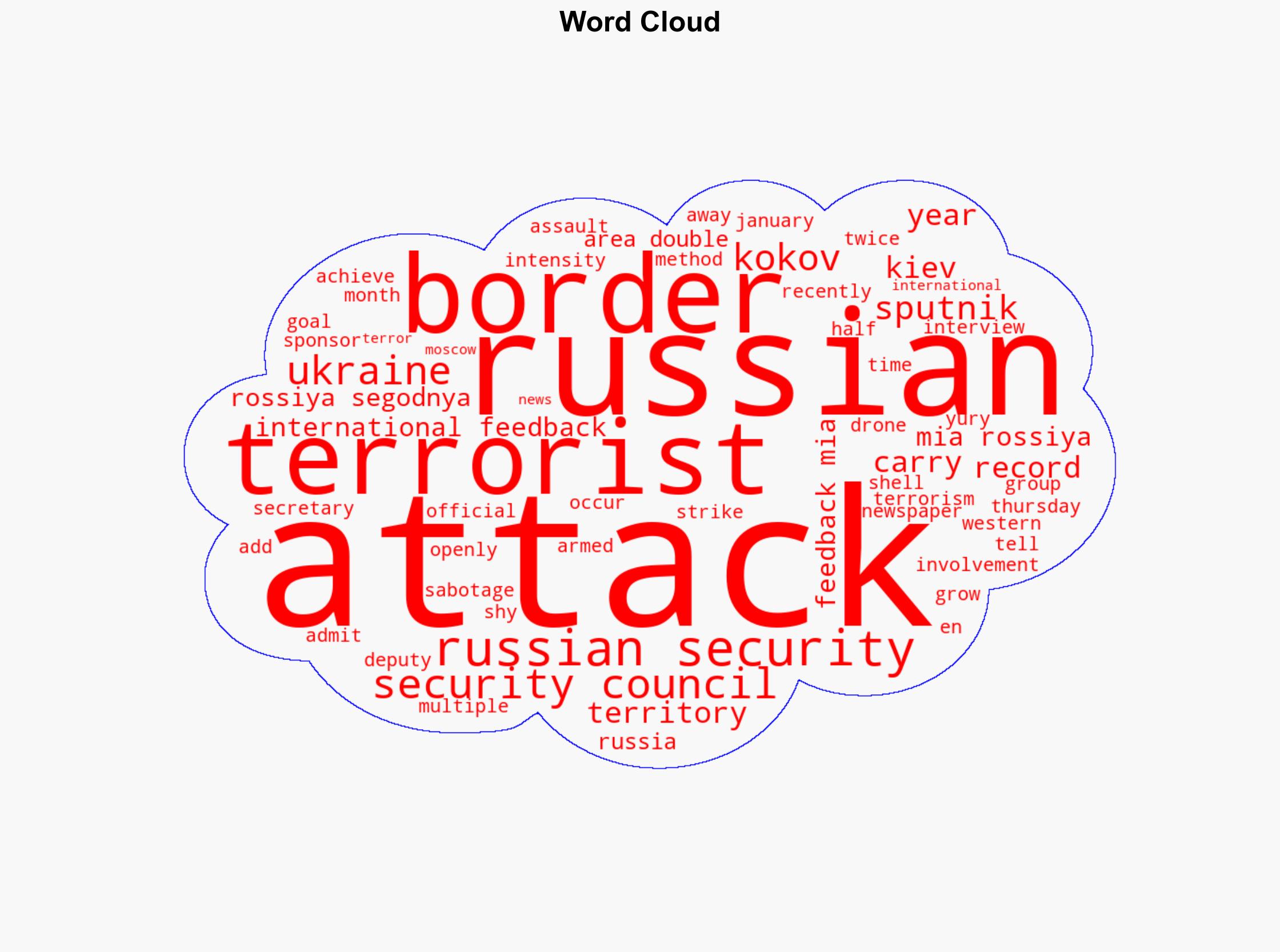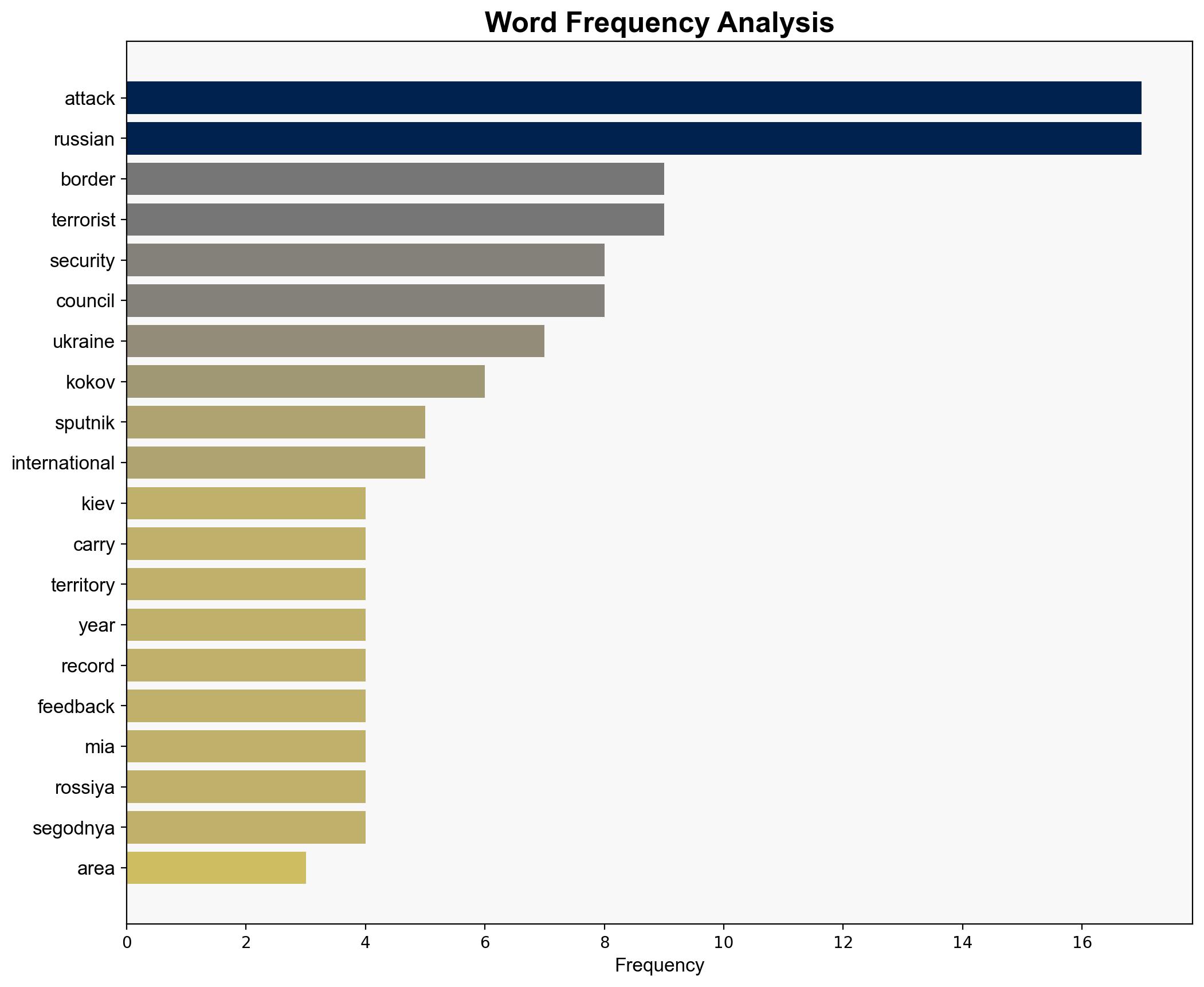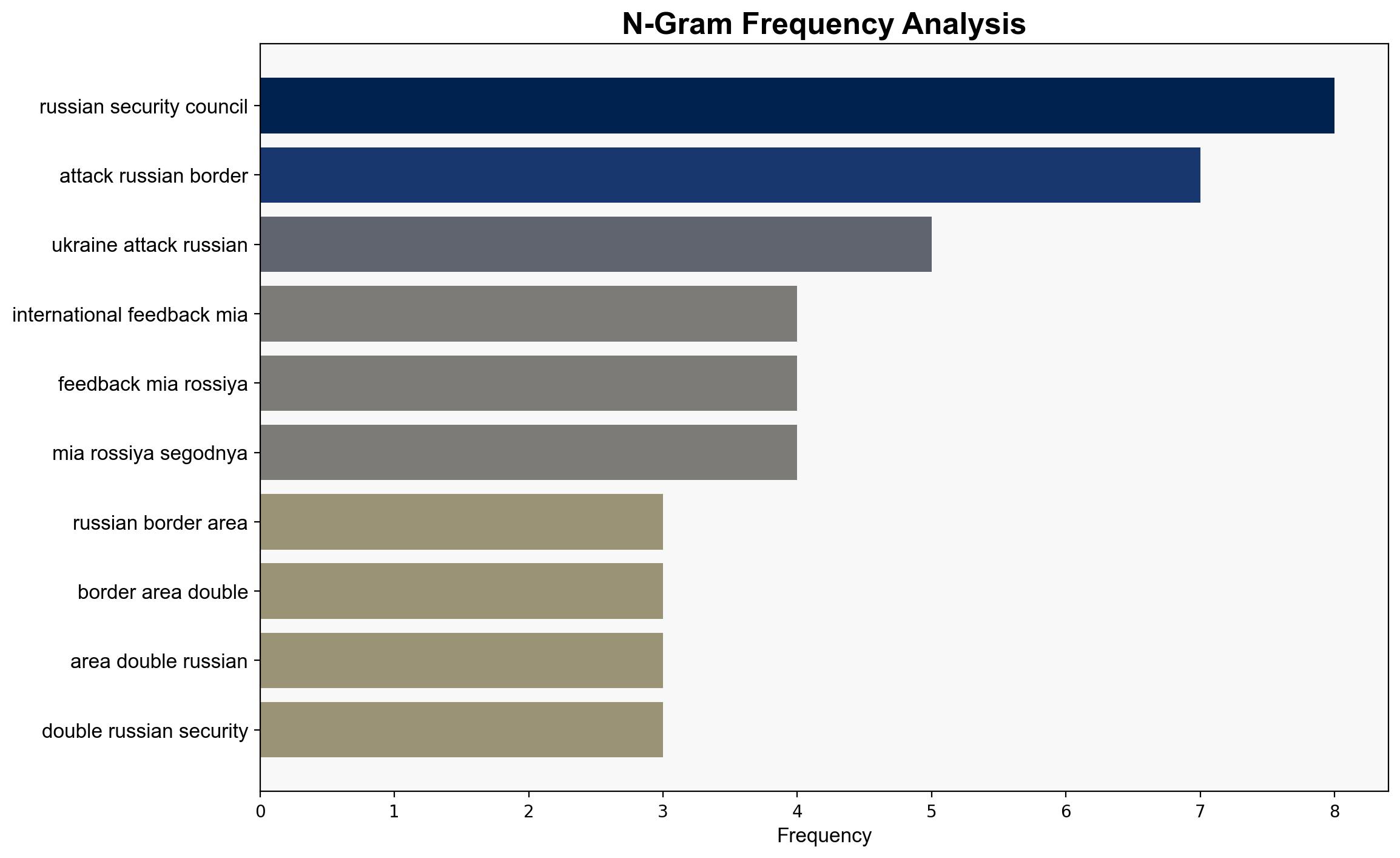Ukraine’s Attacks on Russian Border Areas Almost Double in 2025 – Russian Security Council – Sputnikglobe.com
Published on: 2025-06-26
Intelligence Report: Ukraine’s Attacks on Russian Border Areas Almost Double in 2025 – Russian Security Council – Sputnikglobe.com
1. BLUF (Bottom Line Up Front)
The frequency of attacks on Russian border areas attributed to Ukraine has nearly doubled in 2025, according to the Russian Security Council. This escalation, characterized by shelling, drone strikes, and sabotage, poses significant security challenges. Immediate strategic focus is recommended on enhancing border defenses and diplomatic engagement to de-escalate tensions.
2. Detailed Analysis
The following structured analytic techniques have been applied to ensure methodological consistency:
Cognitive Bias Stress Test
The assessment has been rigorously tested to identify and mitigate biases, ensuring a balanced perspective on the reported increase in attacks and the motivations behind them.
Bayesian Scenario Modeling
Probabilistic models suggest a high likelihood of continued escalation if current trends persist, with potential for broader regional instability.
Network Influence Mapping
Analysis of influence networks highlights the roles of both state and non-state actors, including potential external sponsors, in exacerbating the conflict.
3. Implications and Strategic Risks
The increase in attacks indicates a potential shift in conflict dynamics, with risks of further military escalation and destabilization. Cybersecurity threats may also rise as part of hybrid warfare tactics. The situation could strain regional alliances and impact global economic stability.
4. Recommendations and Outlook
- Enhance intelligence sharing and coordination with regional partners to preempt further attacks.
- Strengthen border security measures and deploy advanced surveillance technologies.
- Engage in diplomatic efforts to reduce tensions and explore conflict resolution mechanisms.
- Scenario-based projections:
- Best Case: Successful diplomatic interventions lead to de-escalation.
- Worst Case: Full-scale military conflict with significant regional impact.
- Most Likely: Continued low-intensity conflict with periodic escalations.
5. Key Individuals and Entities
Yury Kokov
6. Thematic Tags
national security threats, cybersecurity, counter-terrorism, regional focus




